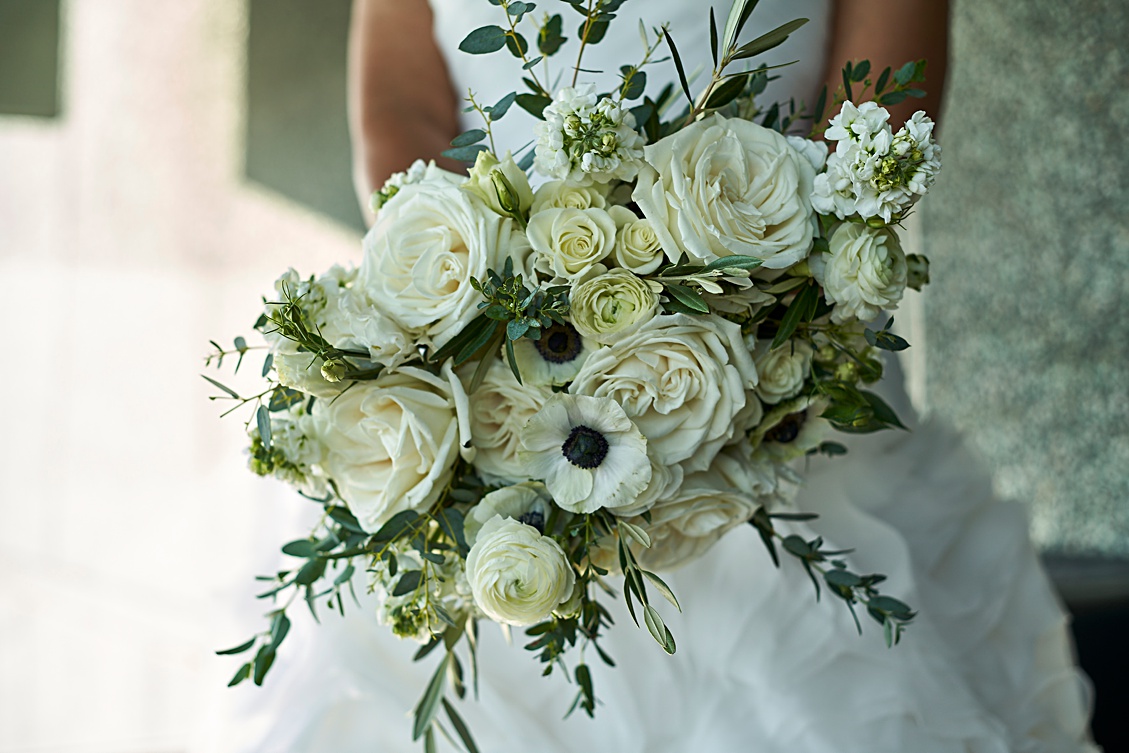
a wedding bouquet from a recent wedding at the Phoenix Art Museum, floral by @Luxeflorist
There are so many sweet and beautiful traditions that are part of every wedding celebration. Whether they are religious, spiritual or decorative – no two weddings are alike – and the interpretation of tradition is as varied as can be imagines. But one thing that seems to be a pretty consistent – a wedding bouquet.
I recently read this excerpt from Modern Weddings – offering a very good overview of the history:
WEDDING TRADITIONS – WHY BRIDES CARRY A BOUQUET
Every woman loves flowers, not only to receive them as a gift, to decorate her home or to wear, but even more so, as a bouquet to carry and complement her wedding gown on one of the most memorable days of her life. The bridal bouquet is an essential part of a modern bride’s outfit, whether it be a lavish opulent affair or a simple garden wedding at the family home. It is true that flowers add visual beauty and a touch of romance to a wedding, but there are deeper reasons for their presence.
A bride carrying flowers has its roots in ancient times. In Ancient Rome, brides carried or wore flower garlands, believing that flowers signify new beginnings, fidelity and hope of fertility. In the Middle Ages, strong-smelling herbs and spices were thought to ward off and drive away evil spirits, bad luck, ill health and help mask the smell of body odour. Often composed of herbs, not flowers, dill was especially popular since, being the herb of lust, its consumption by the bride and groom during the reception was thought to increase sexual desire.
It was during the Victorian era that flowers became part of the wedding bouquet and that has continued until today. The modern version of the bridal bouquet was popularised by Queen Victoria who, when marrying Prince Albert, carried a tussie-mussie, a tiny round clutch of flowers in a filigree holder filled with moss and orange blossom. In Victorian times, lovers often sent different flowers as a way of expressing their love. Each flower had a different meaning, and their exchange soon became popular and was linked to romantic love. Flowers became a part of wedding ceremonies because of this romantic association. Brides carefully chose flowers for the sentiments they represented, and the blooms she carried, became “her flowers” for the rest of her life.
However, in modern times, charming as they may have seemed, the old traditions have been almost forgotten, with brides now selecting flowers for the beauty of their colours, fragrance and shape. The bouquet is the bride’s ultimate accessory and greatly adds to the overall appearance of the day. The bride’s selected blooms are a way for her to express her personal style, taste and personality and an essential complement to her gown.
I think I might investigate a few more wedding traditions!
